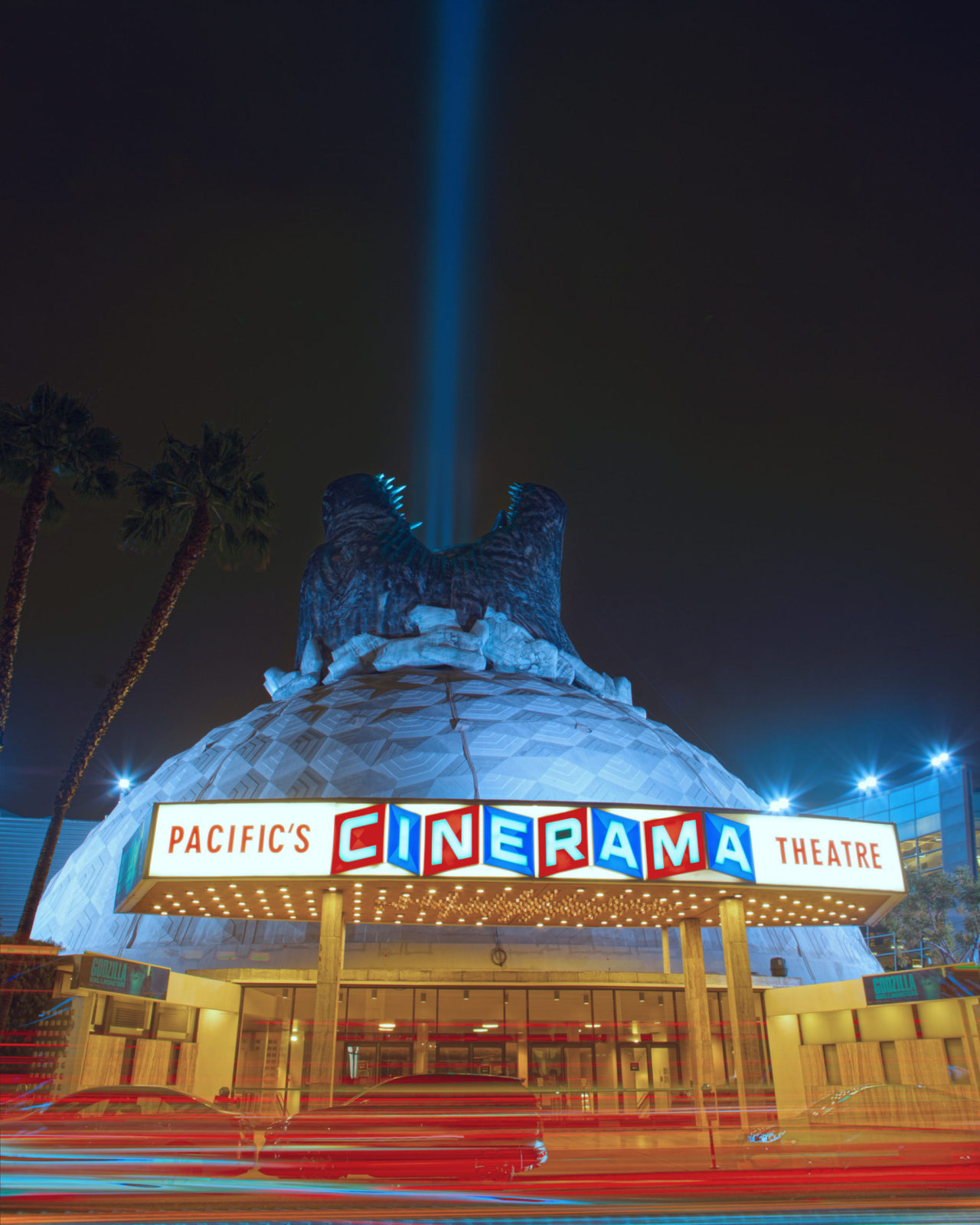Introduction
In April 2021, Pacific Theaters and ArcLight Cinemas announced that they were ceasing all operations. Thus, effectively closing all of their approximately three hundred screens. Most of them were found in California. Of these locations, none caused more distress than the closing of the Cinerama Dome on Hollywood’s Sunset Boulevard.
The movie theater industry was devastated starting in late March 2020 by the global pandemic. However, in recent years, we have seen the majority of cinema chains reopen. For Pacific Theaters, however, this was not the case as their entire staff was fired.
The widespread shutdown of the US economy had affected smaller chains like ArcLight and Pacific. Also, in March 2021, the Alamo Drafthouse chain, which operated roughly forty locations throughout the US, filed for Chapter 11 bankruptcy protection. However, they stated that it would keep most of its theaters operational, while it reorganized.
Cinerama, Inc.
Cinerama, Inc. was the creator of a process that simultaneously projected images from three synchronized 35-millimeter film projectors onto a gigantic curved screen. In February 1963, they came up with a new design for cinemas. This design could show their movies and would be based on a geodesic dome.
Its lead designer, R. Buckminster Fuller, indicated the new cinemas would cost half the price to build. It could also be built in half the time. Cinerama, Inc. had a vision of these theaters being built globally. Their goal was to have six hundred built by late 1965. In April 1963, Pacific Theaters announced their plans to build the first “domed” theater.
The theater chain began to raze existing buildings at a site located on Sunset Blvd., near Vine Street. This new construction would mark the first new motion picture theater built in Hollywood in over thirty years. Their goal was to have fans in the seats for the November 7, 1963 world premiere of It’s a Mad, Mad, Mad, Mad World.
Cinerama Dome
By the time the Cinerama Dome was completed in late 1963, there were only eleven Cinerama films that were being shown in the theaters. The vision of having Cinerama Domes all over the world was facing a harsh reality. This is because Cinerama was extremely expensive to film and costly to produce. In addition, the shipping expenditures to theaters were exorbitant.
On top of this, the unique and bizarre physical dimensions of the film stock made it difficult to convert into a non-Cinerama format and standard theaters. It was also complicated (and costly) to reformat it for television. This was also at a time when licensing films for television was becoming a major part of the budget of a film.
The Dome was completed in an astonishing sixteen weeks and It’s a Mad, Mad, Mad, Mad World premiered on time, to a sold-out crowd. Its screen would hold the honor of having the largest contoured screen on the planet. The film was shot in a new 70-millimeter “single strip” process. Cinerama would switch to this format for the rest of its existence.
The Cinerama Dome, as designed by Welton Becket — who famously designed the Capitol Records building nearby — was, and remains, the world’s only all-concrete geodesic dome, made from over three hundred precast panels that weigh over 7500 pounds each. It has a space-age style to it that is truly something out of Disneyland.
A Cultural Monument
Fortunately, the Cinerama Dome was declared a “historic-cultural monument” by Los Angeles in 1998, so the chances of the iconic structure being demolished are significantly reduced. Welton Becket and the L.A. Conservancy have been spearheading campaigns and threatening legal action since the mid-’90s, to preserve the Dome’s original features.
The Conservancy would rally against Pacific Theaters, to prevent the Dome from being dramatically altered in the late ’90s. The chain wanted to tear down the existing plaza, as well as the box offices and marquee. They envisioned replacing the lobby with a restaurant, and eliminating the legendary curved screen, in favor of stadium seating.
The Conservancy was successful in its threats and the Cinerama Dome was virtually untouched. The development project (featuring the ArcLight Cinemas theaters), would wind up encircling the Dome with dozens of restaurants, numerous retail stores, and, most importantly, parking.
Currently, online petitions continue to be signed, and potential suitors to buy the Hollywood ArcLight Cinema complex are lined up. One possibility may be one of the streaming studio giants swooping in to purchase the iconic and valuable structure. Certainly, with business soaring post-pandemic, the possibility is there.
It should be noted that Netflix purchased the nearby Egyptian Theater, and is currently leasing the Paris Theater in New York City. Both of these transactions are essentially “saving” these legendary monuments from being either repurposed or demolished.
What’s Next?
Ultimately, preservationists whose job and moral obligation it is to “preserve” man-made Wonders such as the Cinerama Dome realize that this sort of thing takes time and money. During the COVID era, this is almost impossible to do. Short-term leasing by companies such as Netflix may be the only way to accomplish this.
While Hollywood’s Cinerama Dome was scheduled to finally reopen in 2024, it looks like this will be delayed. It’s now hoped that the Dome and the adjacent Arclight Theatre will be to reopen sometime in 2025. In 2022, the current owners, Decurion Corporation, received their liquor license and made public their intention to change the complex’s name to Cinerama Hollywood. While the renovations continue, it’s good to know that arthouse fare is still alive and well in Los Angeles.
